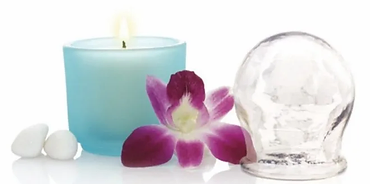No products in the cart.
In Which Conditions Hijama/Wet Cupping Therapy Should Be Avoided?
Hijama/wet cupping therapy has countless benefits but there are some specific conditions in which it should be avoided.

Hijama cupping therapy is a traditional alternative medical treatment practiced in different cultures. The ancient Egyptians, Chinese culture, Arabic medicine, Greek medicine, and Prophetic medicine all practiced diverse types of cupping. Even though the crux of performing cupping is to alleviate the pain by increasing blood circulation and eliminating the toxins from the body. Cupping also helps to reduce pain and inflammation and increases blood flow which provides relaxation and well-being to the body.
Though Hijama cupping therapy has enormous benefits, there are some specific health conditions for which it is highly recommended to avoid Hijama/wet cupping therapy. Some of the states are as under:
- Hijama should be avoided with a high fever.
Reason: A fever is the body’s natural reaction to infections. The immune defence system of our body raises internal body temperature to help fight infections. When an individual performs hijama after a fever, the body gets overburdened. Fevers are often accompanied by shaking, shivering and feeling cold. A body needs rest to fight the outer invaders.
- Hijama should also be avoided if an individual has a fever and still feels weak, exhausted and lethargic.
Reason: After Hijama cupping therapy, some people feel weak, tired or exhausted for a day or two. When an individual is already tired and weak, then wait for a few days to regain his energy and then perform Hijama cupping therapy.
- Pregnant ladies should avoid Hijama cupping therapy.
Reason: Hijama cupping therapy is not considered a safer option during pregnancy. Hijama may invoke the risk of either miscarriage or premature labour, depending on which stage of pregnancy a woman is in. I would not suggest Hijama cupping therapy at any stage of pregnancy. As Hijama cupping therapy is performed, a negative pressure is applied to the cups that loosens the muscles, increases blood flow and stretches the internal organs and tissues. The negative pressure also stimulates the deep tissues, which might be dangerous to the growing baby.
– Patients on regular blood thinning medications like aspirin or warfarin should either avoid hijama or stop taking the blood thinner one day before hijama therapy.
Reason: Blood thinners are used to prevent blood clots. Additional formation of blood clots in the body blocks normal blood flow from reaching tissues and other organs of the body. Any bruise, tiny cuts or incisions can bleed immensely if someone takes blood thinners.
- Those individuals who have thin skin or skin ulcers may avoid Hijama. Such individuals must talk to their doctor before going for this therapy.
Reason: A person with thin skin can bleed easily. It is challenging to stop bleeding if incisions are made on such skin. It is most common in older adults to have thin skin.
- If an individual has undergone any recent surgery or had an accident, they should avoid Hijama for at least a few months.
- Hijama cupping therapy should be avoided on the wounded part of the body. If an individual has rashes or wounds, the cup should not be placed in that area.
- If an individual’s blood pressure is very low/high or their sugar level drops rapidly, performing Hijama in that condition is risky.
Reason: Low/high blood pressure or lower sugar level symptoms include dizziness, tiredness, nausea and fainting. In any of these conditions, Hijama should not be performed.
Diabetic patients can perform Hijama but with extreme caution.
- Severely anemic patients should avoid Hijama. Hijama is effective for mild anemia.
Reason: Many Hijama practitioners recommend that anemic patients should not perform Hijama. They already have poor hemoglobin and red blood cell counts, and blood loss from Hijama can make them weaker and less energetic. Some people believe that Hijama cupping therapy causes anemia. There is no clear evidence that proves wet or Hijama cupping therapy causes anemia. Some Hijama practitioners claim that Hijama might be the treatment for anemia.
- People with seizure disorders should be very cautious before Hijama cupping therapy.
Reason: A seizure disorder is an uncontrolled electrical activity in the brain that changes behaviour, mood, feelings and mental stability. Most seizure disorders can be controlled with medicines. If a person with a seizure disorder wants to perform hijama, consult a doctor before. There must be someone to supervise the person during the therapy sessions.
- Hijama cupping therapy should not be performed if a person has a fractured bone or a dislocated joint.
Reason: Cups should not be placed on a fractured bone or a dislocated joint. Fracture healing involves complex processes of cell and tissue repair. Many players are involved such as growth factors, inflammatory cytokines, antioxidants, bone breakdown and bone-building cells, hormones and amino acids. There is so much going on inside the body. It is highly recommended to let the fractured bone heal accurately. The duration of the healing process depends on the nature of the fracture and the stability of the bones.
- Heart patients and those who have placed pacemakers in their chests should be very cautious about Hijama cupping therapy.
Reason: A pacemaker is a small device implanted in the chest to help control the heartbeat. A doctor may recommend a temporary pacemaker to balance a slow heartbeat after a heart attack. Talk to the doctor before therapy because hijama cupping therapy may interfere with a pacemaker.
- Children under ten and seniors over seventy should not perform Hijama cupping therapy.
Hijama is a natural, holistic, healing therapy that connects body, mind and soul. Hijama cupping therapy has countless health benefits that help to improve an individual’s overall health. But visit your doctor before Hijama cupping therapy if you have the requirements above.





Leave a Reply